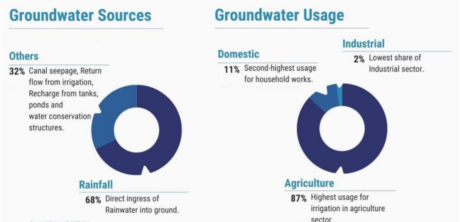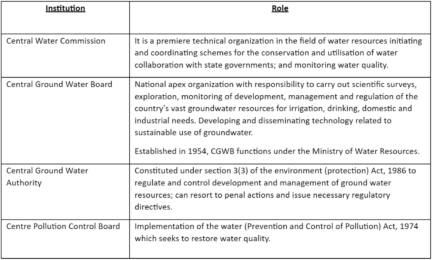Why in News?
– The Jal Shakti Ministry is working on an ambition plan to deploy a vast network of groundwater sensor that will continuously relay information on groundwater levels and degree of
contamination down to taluk level.
– The information is measured and communicated by the Central Groundwater Board (CGWB).
– Network that will continuously measure groundwater quality feed it into a centralised Network-National water informatics centre.
– Monitor would make groundwater water visible in the same way that air quality meteorological variables- air pressure, moisture, precipitation.
– It could potentially provide farmers with groundwater forecasts that would be useful for sowing, and updated advisories that could influence groundwater extraction policy by state.
– The new digital water level recorders will be connected to Piezometers (Piezometers measures the groundwater level) and the recorders will transmit the information digitally.
– In the next three years,CGWB aims to increase its network and collaborated with state bodies ,agriculture and meteorological departments.
Current status of groundwater use in India
– India is about 18% world’s population ,but holds just4% of freshwater resources .
– The total groundwater recharge in the country is 437.60 BCM (billion cubic metres). The annual extraction groundwater is 239.16BCM.
– The average stage of groundwater extraction for the country as a whole is about 60.08%. Anything above 70% is consider critical.
– There are some regions in Punjab, Haryana, Delhi and Rajasthan extract 100% of groundwater blocks.
– 85% of rural India use groundwater for drinking and domestic purposes.
– The major use for groundwater is for irrigation followed by domestic and industrial use.
– 
Major central level water institutions responsible for groundwater management

Programme related to groundwater management
NAQUIM
– NAQUIM (National Aquifer Mapping and Management Programme) is implemented by Central groundwater board (CGWB).
– NAQUIM envisages mapping of aquifers (water bearing formations), their characterization and development of Aquifer Management Plans to facilitate sustainable management of groundwater
resources.
– NAQUIM was initiated as a part of the Ground Water Management and Regulation Scheme to delineate and characterize the aquifers to develop plans for ground water management.
Groundwater contamination
– Due to geogenic-as a result of geological process.
– Nitrate contamination – a result use of nitrogenous fertilizers
– Fluoride contamination
– Arsenic contamination-use of arsenic pesticide, mine waste dump
– Pathogen-improper placed well, can lead to drinking water contaminated with pathogen carried feces and urine.
– Organic compounds-contaminated by careless industrial practice.




